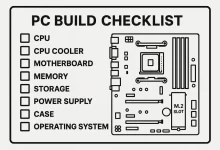Dual-Band WiFi Setup: Should You Merge or Separate SSIDs?
In today’s connected world, choosing the best dual-band WiFi setup can make a dramatic difference in performance, coverage, and stability. As more devices compete for bandwidth, deciding whether to merge your 2.4GHz and 5GHz bands under one SSID or keep them separate has become a hot topic among home users and tech enthusiasts alike.

Dual-Band WiFi Setup: Merge or Separate SSIDs for Optimal Network Performance
Understanding 2.4GHz vs 5GHz WiFi Bands
Before diving into the pros and cons of a dual-band WiFi setup, it’s crucial to understand the key differences between 2.4GHz and 5GHz frequencies:
- Coverage Distance:
2.4GHz signals travel further and penetrate walls more effectively because of their lower frequency. This makes them ideal for larger homes or spaces with multiple obstacles. - Channel Congestion:
The 2.4GHz band is crowded—many appliances (microwaves, Bluetooth devices, older routers) share this frequency. Interference is more likely here, potentially slowing down your connection. - Speed and Interference:
5GHz operates at a higher frequency, enabling faster data rates and less interference. However, its higher frequencies attenuate more easily through walls, resulting in shorter coverage range. - Channel Availability:
The 5GHz band offers more non-overlapping channels (up to 13, depending on your region), acting like a “highway” with fewer “vehicles.” In contrast, 2.4GHz provides only three non-overlapping channels, often leading to a “traffic jam” of devices.
What Is SSID Merging?
SSID merging, often called “band steering” or “single SSID mode,” lumps your 2.4GHz and 5GHz radios under one network name. Your router broadcasts a single SSID, and client devices automatically choose the band based on signal strength and speed. In theory, this simplifies your home network since you only need to remember one network name and password.
Advantages of a Merged SSID
A merged SSID can be a convenient choice if you want to minimize manual switching. Here are some benefits:
- Automatic Band Selection:
Devices attempt to connect to the faster, less congested band when possible. In ideal scenarios, your smartphone or laptop will seamlessly switch to 5GHz when in range and fall back to 2.4GHz outdoors or through thick walls. - Simplified Network Management:
With one SSID, you only need to enter credentials once per device. No more juggling “WiFi-2G” and “WiFi-5G.” - Cleaner Device List:
From your router’s perspective, you see fewer active networks. This can make monitoring connected devices and assigning parental controls a breeze.
When to Consider Merging Your Bands
A dual-band WiFi setup with a merged SSID might be ideal for:
- You live in a small-to-medium-sized home with minimal interference and few physical obstacles.
- Your router features intelligent band steering that truly switches devices on-the-fly (some older or budget routers may advertise this feature without performing well).
- You have a mix of legacy devices (only 2.4GHz capable) and newer devices (both bands capable), but you’d rather let the router decide than manage two networks manually.
Drawbacks of a Merged SSID
While merging bands can streamline your wireless experience, there are potential downsides:
- Poor Band Steering Performance:
Some devices may “stick” to the 2.4GHz band because it has a stronger signal at a distance—even if 5GHz would provide better speed. Without a proper “weak signal disconnection” feature, your router won’t force devices to switch, leaving them on slower connections. - Unpredictable Device Behavior:
Certain smartphones or laptops may not fully support band steering. They might ignore the 5GHz signal entirely, connecting exclusively to 2.4GHz, even when they’re in the same room as the router. - Limited Troubleshooting Insight:
If you experience slowdowns, you can’t immediately tell which band your device is using. Separating SSIDs often makes it clearer whether you have a coverage issue (2.4GHz) or speed issue (5GHz).
Benefits of Separate SSIDs
Splitting your SSIDs—naming the 2.4GHz network “MyHome-2G” and the 5GHz network “MyHome-5G”—allows you to manually steer devices, which can be advantageous in many scenarios:
- Fine-Tuned Control:
You decide which devices always connect to 5GHz (gaming consoles, PCs) and which should stay on 2.4GHz (smart plugs, IoT sensors). This separation ensures each device sits on the ideal band. - Faster Troubleshooting:
If a device is lagging, you know immediately to check its band. Having two SSIDs makes it easier to diagnose coverage holes (2.4GHz) versus interference/spike issues (5GHz). - Optimized Performance:
You can reduce unnecessary hopping between bands. For example, security cameras might need stable coverage (2.4GHz), while streaming devices demand higher throughput (5GHz). Keeping them apart prevents them from interfering with each other’s performance.
Ideal Scenarios for Separate SSIDs
Consider separate SSIDs if:
- You have a large home with many physical obstacles. You want to force high-bandwidth devices near the router onto 5GHz, while devices farther away remain on 2.4GHz.
- Your router’s band steering is unreliable or nonexistent, leading devices to latch onto a suboptimal band.
- You’re a power user who enjoys granular control: assigning specific SSIDs to devices, creating custom QoS rules, or dedicating 5GHz solely for gaming and streaming.
Key Considerations for Homeowners
When evaluating the best dual-band WiFi setup for your situation, ask yourself the following:
- Router Capabilities:
Does your router support robust band steering and “smart disconnect” features? High-end routers often perform this seamlessly, whereas entry-level models may struggle. - Home Layout & Size:
Are there multiple floors, thick walls, or other structures that could degrade 5GHz signals? If so, maintaining a dedicated 2.4GHz SSID ensures devices at a distance stay online. - Device Mix:
How many of your devices support 5GHz? If most are 2.4GHz-only (older smart-home gadgets), a separate SSID prevents legacy devices from dragging down your entire network. - Interference Sources:
Do you live in a dense apartment complex with dozens of neighbors on 2.4GHz? In that case, forcing high-bandwidth activities onto 5GHz might be your ticket to a smoother experience.
Step-by-Step Guide: Merged vs. Separate SSID Setup
1. Check Your Router’s Firmware
Always start by updating your router’s firmware. Manufacturers frequently roll out optimizations for band steering, security patches, and stability improvements.
2. Evaluate Band Steering Performance
Enable your router’s “smart connect” or “band steering” feature (if available). Walk around your home with a smartphone and watch which band it chooses. If devices hang onto 2.4GHz even near the router, consider disabling band steering and opting for separate SSIDs.
3. Naming Conventions & Passwords
Merged SSID: Use a single network name (e.g., MyWiFi) and password.
Separate SSIDs: Choose distinct names like MyHome-2G and MyHome-5G. Use the same password for simplicity or separate passwords if you want to restrict certain devices to one band.
4. Device Allocation
With separate SSIDs, group your devices logically:
- 2.4GHz SSID: Smart bulbs, sensors, IoT devices, older laptops or smartphones that only support 2.4GHz.
- 5GHz SSID: Gaming consoles, streaming boxes, newer laptops/desktops, mobile devices used primarily for high-bandwidth tasks.
5. Monitor & Adjust
After setup, use your router’s admin interface or a WiFi analyzer app to monitor signal strengths and client distribution. If a device that needs top speed is connected to 2.4GHz, consider forcing it onto 5GHz by forgetting the 2.4GHz network on that device and reconnecting to the 5GHz SSID.
Real-World Tips & Troubleshooting
Even with a carefully planned dual-band WiFi setup, you may encounter hiccups. Here are some quick fixes:
- Slow 5GHz Range: If your 5GHz signal fails to reach a room, try moving your router to a more centralized location or consider adding a mesh node.
- Devices Refuse to Switch: Some older smartphones and laptops manually “lock” onto a band. Check the network settings on each device—disable the “auto-connect to 2.4GHz” option, if possible.
- Excessive Interference on 2.4GHz: Use a WiFi analyzer to find the least crowded channel (1, 6, or 11 are best). Manually assign your 2.4GHz SSID to that channel.
- Roaming Issues in Mesh Systems: If you’re using a WiFi mesh, enable “Assist” or “Roaming” features in the mesh app to force devices onto the strongest node or band.
Conclusion: Finding Your Perfect Balance
At the end of the day, the “best” dual-band WiFi setup depends on your home layout, router capabilities, and device lineup. If you crave simplicity and have a newer router with reliable band steering, merging SSIDs can streamline your life. However, if you want granular control, better diagnostics, and tailored performance per device, separate SSIDs often win out.
Experiment with both setups, walk through your living space while streaming or gaming, and monitor how devices hop (or stick) between bands. Once you find the sweet spot, you’ll enjoy blistering speeds on 5GHz where it matters and rock-solid coverage on 2.4GHz where you need it most.
Ready to upgrade your home network? Take charge of your dual-band WiFi setup today, and wave goodbye to dropouts, lag, and guesswork!

 FoxDoo Technology
FoxDoo Technology







